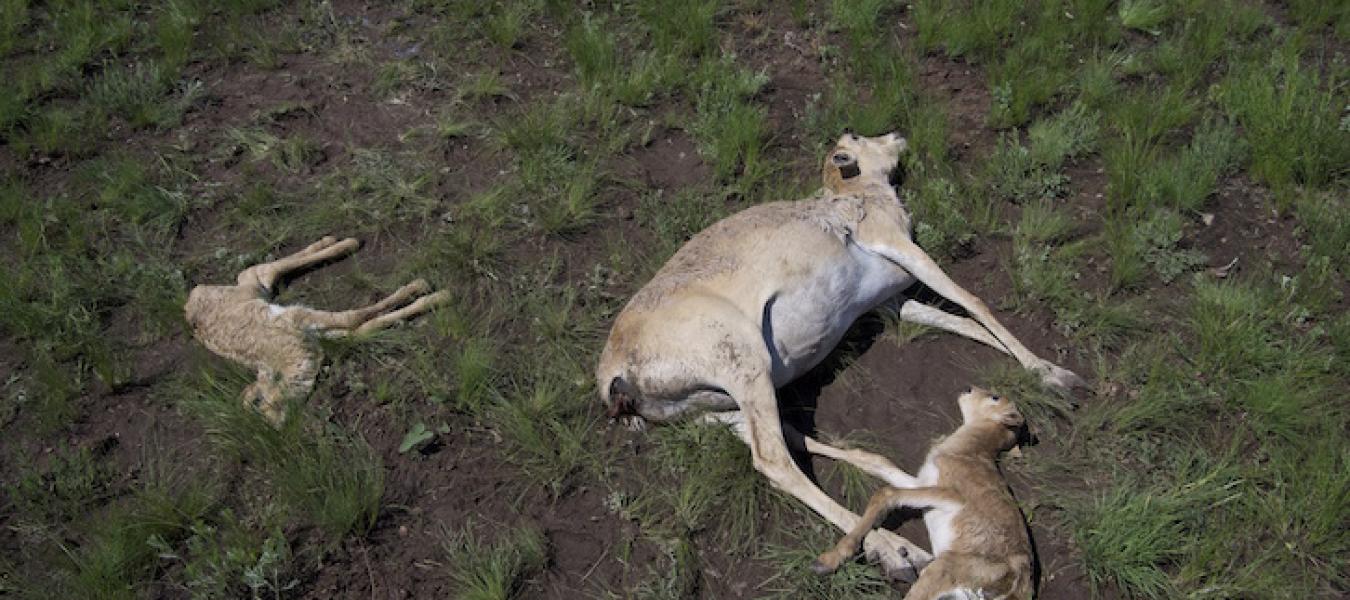Assessment of the Short-Term Effects of Weather Conditions on Mass Mortality of the Saiga Antelope in Kazakhstan

One of the hypotheses is that an environmental factor triggered the precipitation of a polymicrobial disease, primarily haemorrhagic septicaemia caused by Pasteurella multocida serotype B.
This study describes gross pathological findings obtained during field investigations and tests if weather conditions preceding the outbreaks acted as a common trigger. For this purpose, weather conditions at different known die-off sites were compared with those from unaffected sites, using meteorological data from regional, ground-based weather stations.
To verify if datasets from regional stations adequately reflect weather conditions on calving sites, variation with weather records collected on-site was determined. Subsequently, weather records from before the die-offs in 2015 were assessed for consistencies and compared to datasets from a calving aggregation in a non- outbreak year (2014) and from die-offs in the Ural population in 2010 and 2011.
Finally, divergence of weather values in May 2015 from long-term climatic normals was determined. The pathologies observed during post-mortem examinations were consistent with haemorrhagic septicaemia and clostridial enterotoxaemia, with Clostridium perfringens being a potential secondary factor in the polymicrobial disease. While weather patterns preceding the 2015 die-offs did show some similarities, there were also substantial variations. Temperature variation was the only parameter consistent across all 2015 die-off sites and significantly different from 2014, however the implication of this is debatable.
Overall, no evidence was found for the influence of meteorological variables on the onset of disease in saigas. The agreement between on-site and regional weather records was generally moderate and very low for relative humidity records, which could be useful information for future meteorological research in the region.
